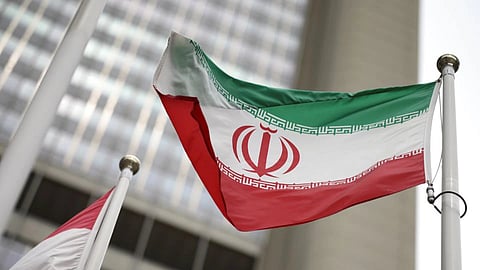

CHENNAI: In an event that seems to have rekindled the memories of the Arab Spring, which witnessed anti-government protests, uprisings and rebellion, a spark of unrest has now fanned the flames of revolution in Iran. The death of a young Iranian-Kurdish woman allegedly at the hands of the infamous morality police has triggered a wave of public anger, calling into question the excesses of the clerical regime.
Mahsa Amini was picked up by the Guidance Patrol authorities and taken to a detention centre for ‘re-education’ for not wearing the hijab appropriately. While the officials claimed that she succumbed to a heart condition, her kin and human rights activists alleged that she was beaten to death, a scenario which gained more traction after videos of the woman lying bruised and bandaged in a hospital went viral.
The outpouring of grief and anger on the streets of some of Iran’s biggest cities, including the capital Tehran, saw women publicly burning hijabs and chopping off their hair as an act of defiance. The protests have claimed as many as 75 lives so far, and led to the arrests of over 1,400 people.
Since 1979 when the clergy seized power, the question of women’s rights had become a talking point the world over. The laws of the land are skewed heavily in favour of men. Inheritance laws are also heavily bent in favour of the male child, who gets twice as much of the father’s property. There are also restrictions on women dancing in public and overseas travel that must be approved by the husband.
The oppression of women was only one side of the coin, as the political freedom of individuals and free thinkers had also been jeopardised in the country for several decades now. A case in point is filmmaker Jafar Panahi who has been imprisoned for voicing his support for two other members of the film fraternity who had protested against widespread corruption in the government.
The deep-rooted problems ailing the country was visible last year during the presidential election when Iran’s leadership virtually disqualified every candidate in the race, barring the supreme leader Ayatollah Khamenei’s preferred choice – the ultra-conservative Ebrahim Raisi. The irony was not lost on a populace that had embarked by the millions to protest in 2009 at what they believed was election rigging to guarantee a president who would balk at the talk of reforms and continue with the hard-line rule.
A decade later in 2018 and 2019, crowds spilled over onto the streets furious over a weakened economy, high inflation and skyrocketing fuel prices. This time around, the reactions to the protests are quite revealing. The Biden administration has permitted tech companies to offer services in Iran without the fear of violating US sanctions that usually prevent conducting trade with Tehran. Export of private satellite internet equipment like Elon Musk’s Starlink to Iran has also been cleared.
Political observers believe that Iran’s Revolutionary Guard is more than capable of stifling this new wave of protests. But the death of the young woman must be viewed by the powers that be as a sign of how a system, which had seemingly evolved to safeguard the morals of the nation, has now ended up making casualties of the most vulnerable and innocent members of society – its youth.
Visit news.dtnext.in to explore our interactive epaper!
Download the DT Next app for more exciting features!
Click here for iOS
Click here for Android